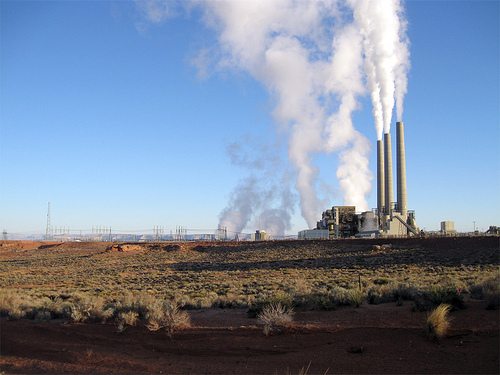

Environment
WMO: greenhouse gas levels rising at fastest rate since 1984
Concentrations of greenhouse gasses in the atmosphere reached record levels in 2013, the UN World Meteorological Organization (WMO) has warned in a finding that underlines the need for an international climate change treaty.
[Blue & Green Tomorrow is currently running a crowdfunder to ensure its survivial. Please pledge.]
Though many nations have begun implementing emission reduction strategies in recent years, between 2012 and 2013 levels of atmospheric carbon dioxide grew at their fastest rate since 1984, the WMO said.
Overall, an increase in greenhouse gasses meant that between 1990 and 2013 there was a 34% rise in radiative forcing – the warming effect on the climate – the annual Greenhouse Gas Bulletin reported.
Whereas most analyses consider the emissions of greenhouse gasses, from sources such as power plants, transport and industry, the bulletin looks instead at the levels of gasses that remain in the atmosphere.
Around half of emissions are absorbed by the oceans or by the biosphere – in trees and other living organisms – but the other half persists in the air.
The bulletin reports that the global atmospheric concentration of carbon dioxide averaged 396 parts per million (ppm) in 2013, up by almost 3ppm from 2012.
April of this year proved to be the first month in human history in which levels of CO2 averaged at over 400 ppm, and the WMO warns that the annual average is likely to pass this threshold in 2015 or 2016.
“Carbon dioxide remains in the atmosphere for many hundreds of years and in the ocean for even longer. Past, present and future CO2 emissions will have a cumulative impact,” explained WMO secretary general Michel Jarraud.
“The Greenhouse Gas Bulletin shows that, far from falling, the concentration of carbon dioxide in the atmosphere actually increased last year at the fastest rate for nearly 30 years.
“We must reverse this trend by cutting emissions of CO2 and other greenhouse gases across the board. We are running out of time,” he said.
Jarraud’s warning comes ahead of a crucial UN climate summit, to be held in New York on September 23. It is hoped the talks will pave the way for a binding global deal to cut emissions in a 2015 summit in Paris.
“The Greenhouse Gas Bulletin provides a scientific base for decision-making,” said Jarraud.
“We have the knowledge and we have the tools for action to try keep temperature increases within 2C to give our planet a chance and to give our children and grandchildren a future. Pleading ignorance can no longer be an excuse for not acting.”
For the first time, the annual bulletin also features a section on ocean acidification – which occurs when carbon emissions are absorbed by the seas and presents a severe threat to marine life.
The current rate of acidification, the WMO warns, has not been matched in at least 300 million years.
Previous studies have warned that the current acidification trend eclipses even the ancient extinction event that occurred 56 million years ago, when atmospheric carbon dioxide levels mysteriously doubled and many sea dwelling species were wiped out.
Wendy Watson-Wright, executive secretary of the Intergovernmental Oceanographic Commission of UNESCO added, “If global warming is not a strong enough reason to cut CO2 emissions, ocean acidification should be, since its effects are already being felt and will increase for many decades to come.”
Photo: squeaks2569 via Flickr
Further reading:
Climate’s ‘annual physical’ reveals record-breaking global warming
‘Time is running out’ to reduce carbon emissions, warns UN
Ban Ki-moon: world must act on climate change now
Current rate of ocean acidification eclipses ancient extinction event
Ocean acidification will threaten fish stocks


 Environment10 months ago
Environment10 months agoAre Polymer Banknotes: an Eco-Friendly Trend or a Groundswell?

 Environment11 months ago
Environment11 months agoEco-Friendly Home Improvements: Top 7 Upgrades for 2025

 Features8 months ago
Features8 months agoEco-Friendly Cryptocurrencies: Sustainable Investment Choices

 Features10 months ago
Features10 months agoEco-Friendly Crypto Traders Must Find the Right Exchange





























